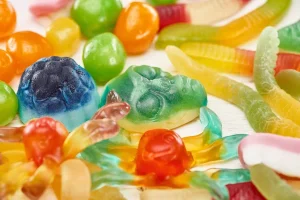Amanita muscaria, commonly known as the fly agaric mushroom, has a long and storied history intertwined with folklore, religion, and traditional medicine. Recent developments have seen the emergence of amanita muscaria gummies, which offer a modern, convenient, and palatable way to consume this ancient mushroom. The journey from wild mushroom to gummy encapsulates a fascinating blend of history, cultural shifts, and scientific advancements.
Historically, amanita muscaria gummies have been both revered and feared. Its bright red cap speckled with white spots is iconic, often depicted in fairy tales and Christmas imagery. Indigenous Siberian tribes are known to have used the mushroom in shamanic rituals, believing it could induce visions and spiritual experiences. The Vikings reportedly consumed it to enter a berserker state, enhancing their ferocity in battle. However, its use was not without risk, as the mushroom contains potent psychoactive compounds, primarily muscimol and ibotenic acid, which can cause intense hallucinations and physical discomfort if not prepared correctly.
The advent of Amanita muscaria gummies represents a significant shift from these traditional practices. The transformation from raw mushrooms to gummies involves careful processing to reduce toxicity and standardize dosages, making consumption safer and more predictable. This modern innovation can be attributed to advances in food science and a growing interest in natural psychoactive substances.
Amanita muscaria gummies first gained popularity in the alternative health and wellness community. Enthusiasts appreciate the gummies for their purported benefits, which include stress relief, mood enhancement, and mild euphoria. Unlike psilocybin mushrooms, Amanita muscaria’s effects are due to different psychoactive compounds, offering a unique experience.
The process of creating these gummies begins with harvesting Amanita muscaria mushrooms, followed by a meticulous drying and decarboxylation process to convert ibotenic acid into the less toxic muscimol. The mushrooms are then extracted into a form that can be infused into gummy candy. This transformation not only mitigates the risks associated with raw consumption but also makes the experience more accessible to a broader audience.
Commercial production of Amanita muscaria gummies has sparked debates about safety and regulation. While some praise the gummies for providing a controlled and enjoyable way to experience the mushroom’s effects, others express concern over potential misuse and the need for comprehensive regulation.












